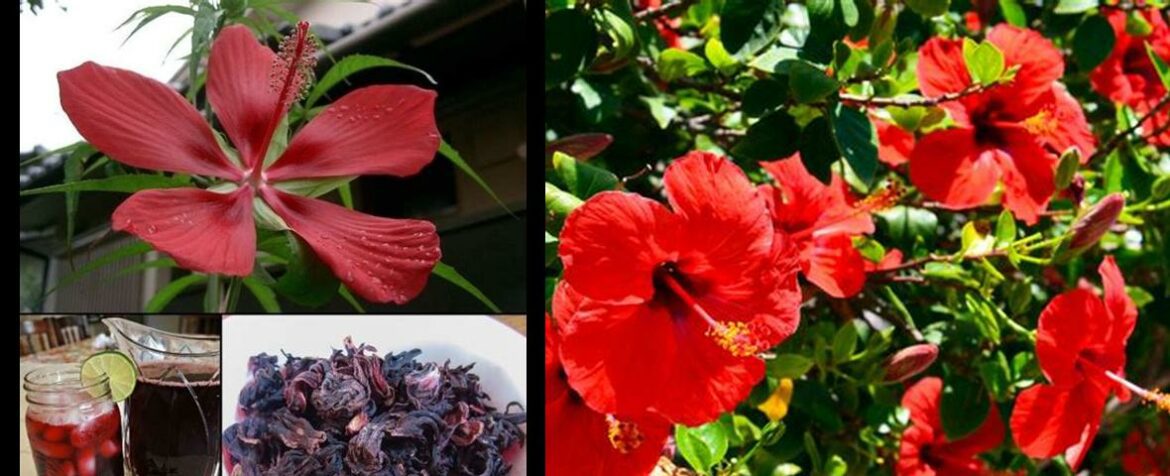Is hibiscus the same as jamaica: Are you a fan of vibrant blossoms that transport you to tropical paradise? If so, you’ve probably come across the terms “hibiscus” and “Jamaica” in your search for the perfect botanical delight. But here’s the burning question: Is hibiscus the same as Jamaica? Join us on a journey through the world of these stunning flowers as we unravel the mystery and uncover fascinating facts that will leave you craving for more. Get ready to dive into the enchanting world of hibiscus and Jamaica, where beauty and flavor intertwine in a way that will make your taste buds and imagination soar.
Hibiscus and Jamaica: A Journey Through the World of Vibrant Blossoms
In the realm of flowers, few names evoke such vibrant imagery as hibiscus and Jamaica. These blossoms, renowned for their beauty and health benefits, have captured the attention of gardeners, herbalists, and culinary enthusiasts worldwide. While often used interchangeably, hibiscus and Jamaica possess distinct characteristics that set them apart as unique botanical wonders. Join us as we embark on a journey to explore the similarities and differences between these captivating flowers.
Jamaica: A Caribbean Treasure
Native to tropical regions, particularly the island of Jamaica, Jamaica flowers (Hibiscus sabdariffa) are a symbol of Caribbean culture. With their deep red color and trumpet-shaped petals, these blossoms add a touch of elegance to any garden or landscape. Their tart and tangy flavor, with hints of citrus and cranberry, makes them a popular choice for herbal teas, known as sorrel drinks, which are often enjoyed during special occasions like Christmas and Easter.
Beyond their culinary delights, Jamaica flowers have long been revered for their medicinal properties. Traditional healers have used them to reduce oxidative stress, promote healthy digestion, and alleviate inflammation. Modern research has begun to validate these traditional uses, uncovering the potential of Jamaica flowers to lower blood pressure, improve cholesterol levels, and protect against chronic diseases.
Hibiscus: A Global Beauty
In contrast to Jamaica’s Caribbean origins, hibiscus flowers (Hibiscus rosa-sinensis) are found in various parts of the world, including Africa, Asia, and the Pacific Islands. These versatile blossoms come in various colors, including red, pink, yellow, and white, making them a popular choice for gardens and parks. Their delicate and slightly sweet flavor, with hints of cranberry, adds a touch of elegance to salads, jams, jellies, and desserts.
Like their Jamaican counterparts, hibiscus flowers possess medicinal qualities. They have been used to aid digestion, promote healthy skin, and combat inflammation. Studies have also shown that hibiscus flowers may help lower blood pressure and cholesterol levels, making them a potential ally for heart health.
Unveiling the Similarities and Differences
Despite their distinct origins and flavors, Jamaica and hibiscus flowers share several similarities. Both belong to the Malvaceae family, which includes over 2,000 species of flowering plants. They both have vibrant colors, with Jamaica’s deep red sepals and hibiscus’s large and colorful petals. Additionally, both flowers are rich in antioxidants, vitamins, and minerals, providing various health benefits.
However, there are also key differences between these two flowers. Jamaica flowers typically have a tart and tangy flavor, while hibiscus flowers have a more delicate and slightly sweet taste. Jamaica flowers are primarily used to make beverages, while hibiscus flowers are often consumed in salads, jams, jellies, and desserts. Additionally, Jamaica flowers have particularly high levels of anthocyanins, which have anti-inflammatory properties, while hibiscus flowers are unique in their ability to naturally lower blood pressure.
A World of Possibilities
Whether you prefer the bold flavors of Jamaica or the delicate sweetness of hibiscus, these flowers offer a world of possibilities for culinary and medicinal exploration. Their vibrant colors and diverse flavors make them a delightful addition to any garden or kitchen. And with their potential health benefits, they can contribute to a healthier lifestyle. So, embrace the beauty and benefits of hibiscus and Jamaica flowers and discover the wonders they hold.
FAQ about Hibiscus and Jamaica
Q: Are hibiscus and Jamaica the same flower?
A: No, hibiscus and Jamaica are not the same flower. They are two distinct botanical wonders with different characteristics.
Q: What is the botanical name for Jamaica flowers?
A: The botanical name for Jamaica flowers is Hibiscus sabdariffa.
Q: Where are Jamaica flowers native to?
A: Jamaica flowers are native to tropical regions, particularly the island of Jamaica.
Q: What are some culinary uses of Jamaica flowers?
A: Jamaica flowers are often used to make herbal teas, known as sorrel drinks, which have a tart and tangy flavor with hints of citrus and cranberry. They are popularly enjoyed during special occasions like Christmas and Easter.
Q: What are some medicinal qualities of hibiscus flowers?
A: Hibiscus flowers have been used to aid digestion, promote healthy skin, and combat inflammation. They have also shown potential in helping to lower blood pressure and cholesterol levels, making them beneficial for heart health.
Q: Can hibiscus and Jamaica flowers be grown in gardens?
A: Yes, both hibiscus and Jamaica flowers can be grown in gardens. They add beauty and elegance to any landscape.


